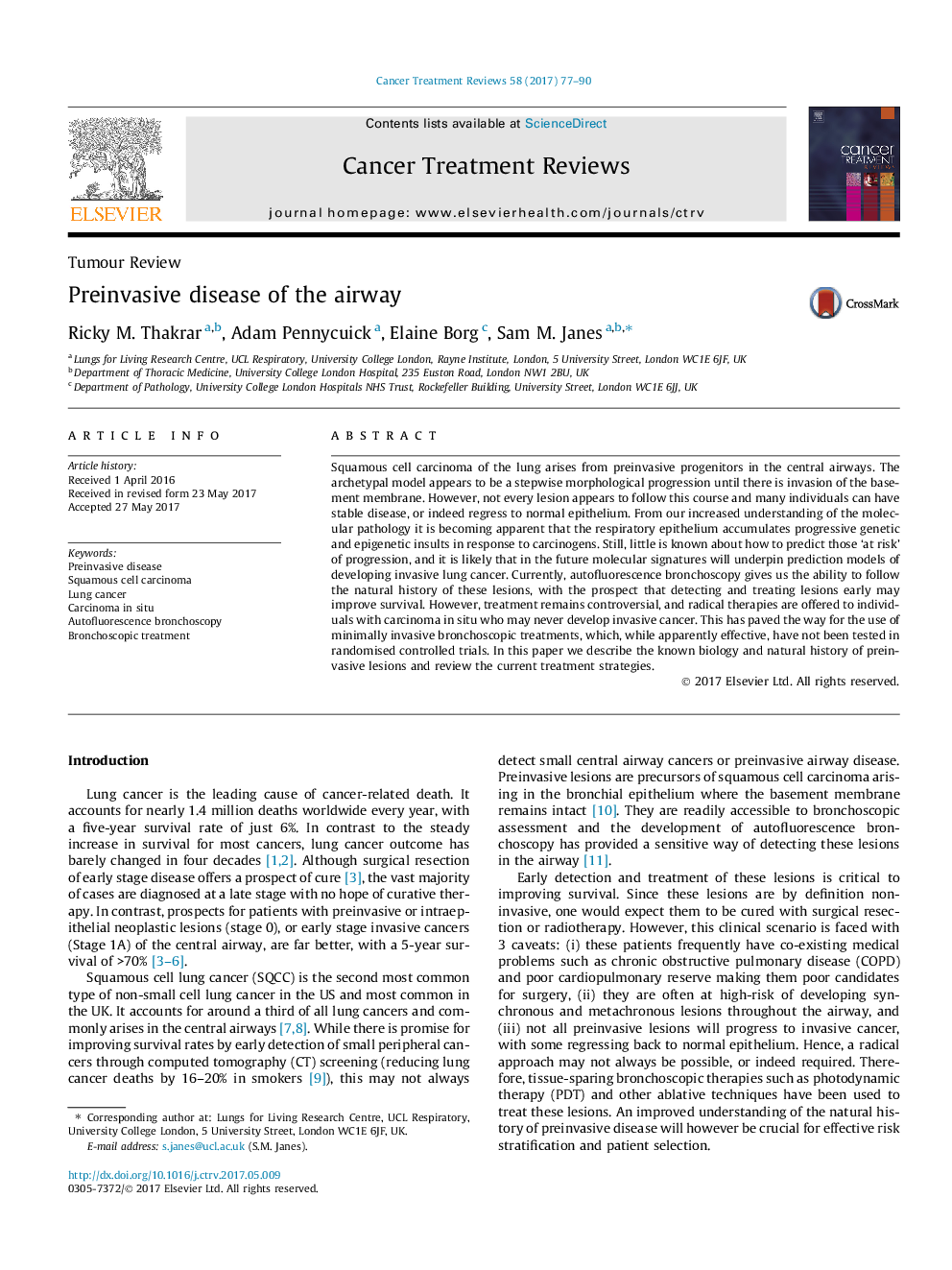| Article ID | Journal | Published Year | Pages | File Type |
|---|---|---|---|---|
| 5697583 | Cancer Treatment Reviews | 2017 | 14 Pages |
Abstract
Squamous cell carcinoma of the lung arises from preinvasive progenitors in the central airways. The archetypal model appears to be a stepwise morphological progression until there is invasion of the basement membrane. However, not every lesion appears to follow this course and many individuals can have stable disease, or indeed regress to normal epithelium. From our increased understanding of the molecular pathology it is becoming apparent that the respiratory epithelium accumulates progressive genetic and epigenetic insults in response to carcinogens. Still, little is known about how to predict those 'at risk' of progression, and it is likely that in the future molecular signatures will underpin prediction models of developing invasive lung cancer. Currently, autofluorescence bronchoscopy gives us the ability to follow the natural history of these lesions, with the prospect that detecting and treating lesions early may improve survival. However, treatment remains controversial, and radical therapies are offered to individuals with carcinoma in situ who may never develop invasive cancer. This has paved the way for the use of minimally invasive bronchoscopic treatments, which, while apparently effective, have not been tested in randomised controlled trials. In this paper we describe the known biology and natural history of preinvasive lesions and review the current treatment strategies.
Keywords
Related Topics
Health Sciences
Medicine and Dentistry
Oncology
Authors
Ricky M. Thakrar, Adam Pennycuick, Elaine Borg, Sam M. Janes,
